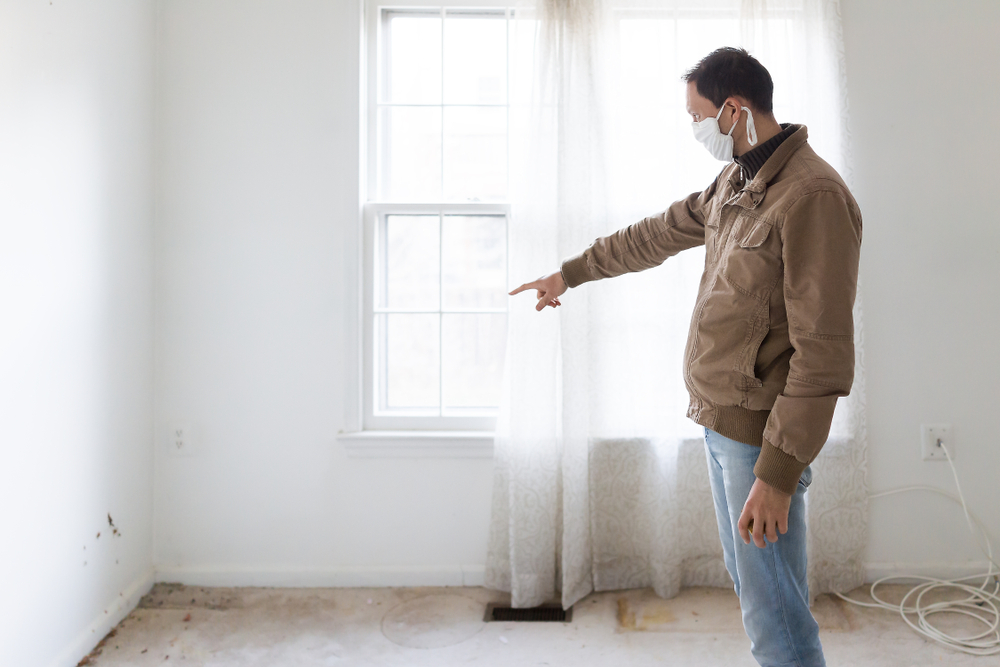What exactly is Mould?
Mould is a kind of fungus, one that primarily grows in very humid environments. In your home, this can be places like your basement or bathrooms, but also certain home appliances, like humidifiers or your air conditioner. Mould is something you can find any place with the right combination of oxygen, heat, moisture, and a food source. Food sources can be things like plants or fiber, and in your home specifically, they might be walls, pipes, leaky roofs, or any flooded area. Mould actually travels through the air, where it exists as tiny spores looking for any wet area where it can cling and then breed. Mouldy areas need to be something you deal with promptly, because you want to take care of it before spores contaminate any other areas.
Check out this Health and Safety Fact Sheet from the Ottawa Public Health website
Mould is an irritant and allergen at the same time. On top of just looking physically ugly, it can trigger physical reactions in people ranging from minor allergies all the way up to serious health risks. Common symptoms include but are not limited to skin rashes, headaches, trouble breathing, and red and/or watery eyes. Mould spores might also get into someone’s lungs and trigger asthma. Many people think that mould allergies are like pollen allergies, in that they happen in certain seasons. However, mould allergies can happen all around the year. Given that, everyone needs to watch out for mould showing up in any buildings they spend time in.
Removing Mould From Your Carpet
There are many potential problems that can happen with your carpet, and mildew and mould are likely the worst among them. On top of their unsightly appearances, they are both unhealthy, result in unwanted odors and smells, and are associated with many different respiratory ailments. Places with humidity and warmth are inviting to mildew and mould. Spores are typically airborne, which means they can spread throughout your home with ease. They might also be something you or others inhale into your lungs, where they can result in health issues. Typically speaking, exposure might lead to numerous allergic symptoms, including but not limited to fatigue, wheezing, nasal congestion, watery eyes, sneezing, itching, runny nose, difficulty breathing, headaches, and asthma attacks. If your carpet has undergone water damage without being appropriately dried, then mould might have developed or could be in the development process. This is why it’s so crucial that you act quickly to make sure that your wet carpet is dried appropriately.

Unfortunately, in many cases, the only truly effective way of removing carpet mould from your home is to remove the carpet itself and replace it. However, if the infection your carpet has is rather mild or tame, you might be able to try and remove it on your own. You could get lucky and knock this problem out in your first try. If you have a persistent mould problem, then contact a professional carpet cleaning service like WeCleanCarpets.org.
First Things First
Open all your doors and windows so you can let fresh air in and have the chance to circulate. Anytime mould spores get perturbed, they’re going to get airborne again, meaning that they can travel easily into your lungs. Given that, be sure that you are avoiding direct contact with any mould present as much as you can. Use gloves, safety goggles, and most importantly, a mask. Also make sure that children and pets stay outside of the contaminated room. Some of your home’s occupants might be more susceptible than others to mould, including anyone with existing respiratory ailments, anyone with a low immune system, and the elderly. If you can, get them out of the home completely while you do this.
Removing The Mould
Mould usually gets rather attached to the place it calls home, meaning it’s not going to be easy to convince it to move. Mould adheres to carpet fibers in ways that mean you need to scrub it thoroughly for it to go away. If you have a manageable area of mould growing, then you can mix one part of white vinegar, bleach, or Lysol to four parts of fresh water. Spray your carpet with whatever solution you create, before letting it set for a minimum of 15 minutes. Next, get a clean cloth and another solution of warm, soapy water. Dish-washing soap is fine here. Use it to scrub the area. Then, use a clean cloth and fresh water with nothing else in it to rinse the area. Follow this up with another spray of your solution to repeat the process. Once you have done the whole process a second time, vacuum any mould and dirty away. Make sure you prevent future mould growth by getting all the water from the carpet. Once you vacuum up the water, open up your windows and put industrial fans in place. Utilize a dehumidifier in order to free the room from lingering moisture. As stated, when mould gets seriously stuck in your carpet, you might have no way out but replacing it. When you finish, change or clean your vacuum filter in order to keep your home free of mould yet again.
When You Should Contact A Professional
You can attempt cleaning this on your own if the area isn’t very big. On the other hand, if your problem area is more than just a few square feet, you need to consult a remediation professional. Cleaning up a small area could automatically release the spores up into the air, and this can mean health risks for all occupants of the entire building. As a result, attempting to clean up larger amounts might result in serious health problems that cost a lot more than professional cleaning would.
You need to think about bringing in a specialist when the following happen:
- You have issues spread past just a few square feet of area.
- Your home or building occupants are suffering from asthma, allergies, and other respiratory issues.
- Repetitive cleaning isn’t working.
- You just don’t know how extensive the issue really is.
- You can smell mildew in your carpet.
Need and assessment? We can Help …




